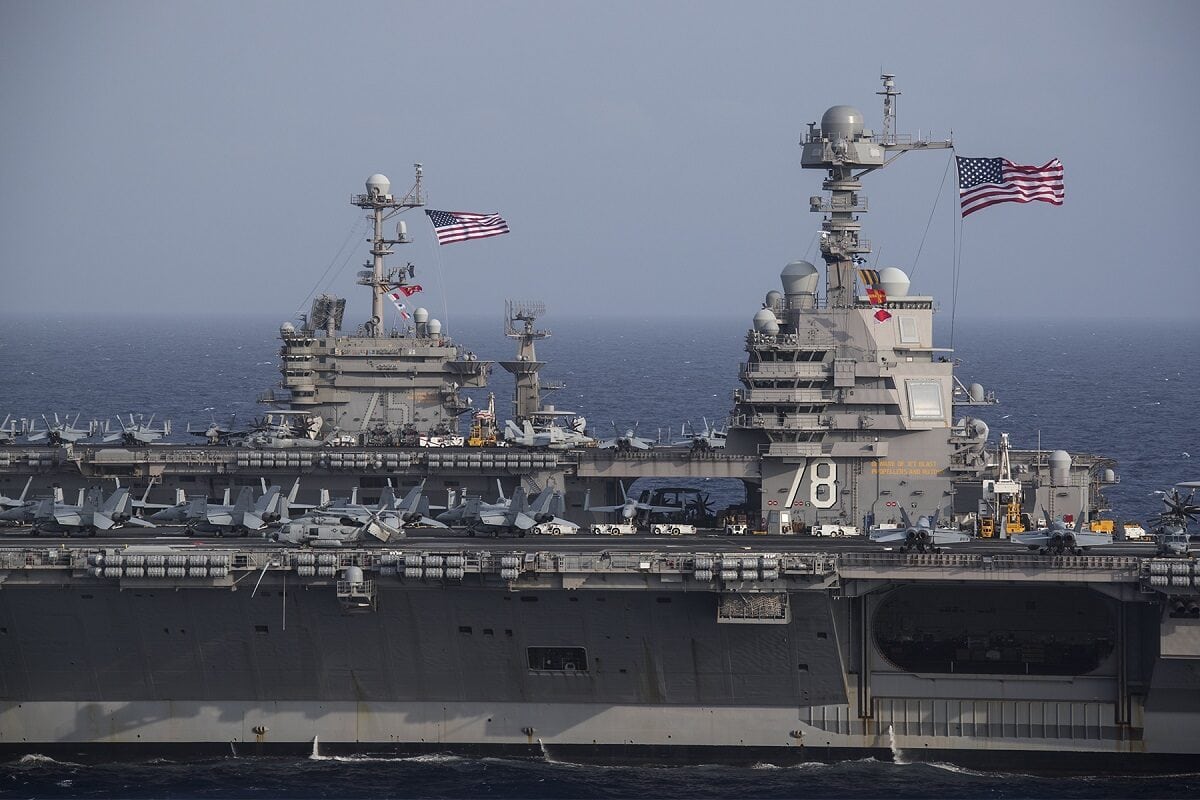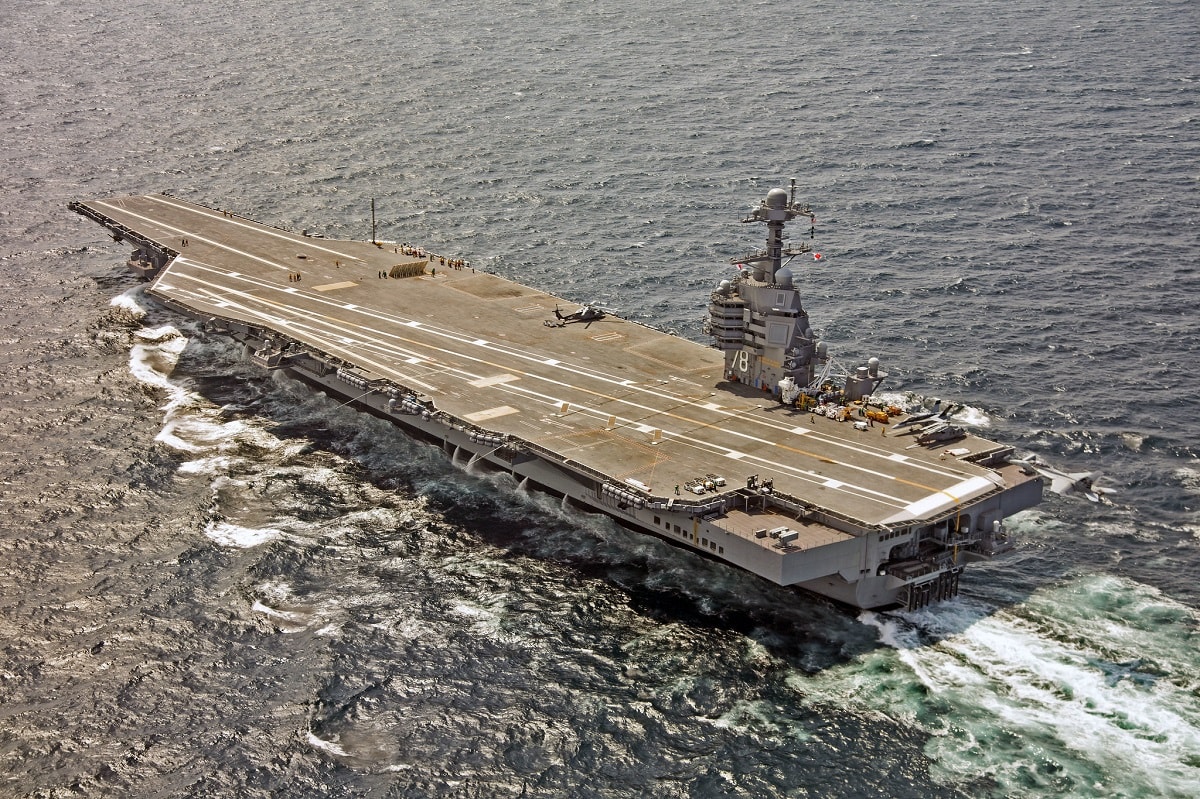The U.S. Navy’s newest and most advanced aircraft carrier, USS Gerald R. Ford (CVN-78) departed Naval Station Norfolk last Friday to make the transit to Newport News Shipyard, where the ship will spend the next six months undergoing her Planned Incremental Availability (PIA), a period of modernization, maintenance, and repairs. This is the final maintenance phase prior to the warship’s anticipated inaugural deployment, which is scheduled for next year.
“Team Wolverine is ready for this brief but important maintenance period in Newport News, because we’re pumped for what comes next,” said Capt. Paul Lanzilotta, Ford’s commanding officer. “This is a first-in-class warship that will lead the future of carrier naval aviation for years to come, and this PIA is the last milestone for us to complete prior to our first work ups and deployment.”
Post Delivery
The move to Newport News followed what the Navy described as a fast-paced and successful 21 months of post-delivery test and trials (PDT&T) and Full Ship Shock Trials (FSST), the latter of which involved setting of controlled explosives next to the ship while it was off the coast of Florida. The carrier successfully withstood the impact of three 40,000-pound underwater blasts, released at distances progressively closer to the ship to confirm that it can continue to meet demanding mission requirements under the harsh conditions it might encounter in battle.
“This ship and the crew performed exceptionally well during shock trials, and much of the credit goes to the ship designers and builders who put in the technical rigor to ensure Ford-class carriers will sustain Naval Aviation for generations to come,” said Lanzilotta.
The intense testing and trials period is described as crucial to ensuring the overall deployment readiness of the Navy’s newest class of nuclear-powered aircraft carriers. During the PDT&T, the warship also served as the sole East Coast platform for conducting carrier qualifications, qualifying more than 350 pilots.
The tests also allowed the Navy to determine what improvements or modifications should be made to the follow-on carriers including the future USS John F. Kennedy (CVN-79), Enterprise (CVN-80), and Doris Miller (CVN-81).
Resolving Its Problems
Even as the ship completed its final PDT&T, and prepares for its PIA, USS Gerald R. Ford still has a few kinks to work out – notably a toilet system that has been known to clog, as well as adjustments to its eleven Advanced Weapons Elevators (AEWs). All of those must be fully operational before the system can take part in its first overseas deployment – and as of this month, four were still not installed and operational.

200604-N-QI093-1142
ATLANTIC OCEAN (June 4, 2020) The Ford-class aircraft carrier USS Gerald R. Ford (CVN 78) and the Nimitz-class aircraft carrier USS Harry S. Truman (CVN 75) transit the Atlantic Ocean, June 4, 2020, marking the first time a Ford-class and a Nimitz-class aircraft carrier have operated together underway. Gerald R. Ford is underway conducting integrated air wing operations and the Harry S. Truman Carrier Strike Group remains at sea in the Atlantic Ocean as a certified carrier strike group force ready for tasking in order to protect the crew from the risks posed by COVID-19, following their successful deployment to the U.S. 5th and 6th Fleet areas of operation. (U.S. Navy photo by Mass Communication Specialist 2nd Class Ruben Reed/Released

ATLANTIC OCEAN (July 28, 2017) An F/A-18F Super Hornet assigned to Air Test and Evaluation Squadron (VX) 23 approaches the aircraft carrier USS Gerald R. Ford (CVN 78) for an arrested landing. The aircraft carrier is underway conducting test and evaluation operations.(U.S. Navy photo by Erik Hildebrandt/Released) 170728-N-UZ648-161
Last month, the Chief of Naval Operations (CNO) Adm. Mike Gilday provided an update on the state of the AEWs and said that lessons were learned from the process, which will be applied to newer ship classes including the Constellation-class frigates. Getting Ford ready for her maiden deployment likely remains one of the Navy’s top priorities.
Peter Suciu is a Michigan-based writer who has contributed to more than four dozen magazines, newspapers and websites. He regularly writes about military small arms, and is the author of several books on military headgear including A Gallery of Military Headdress, which is available on Amazon.com.

